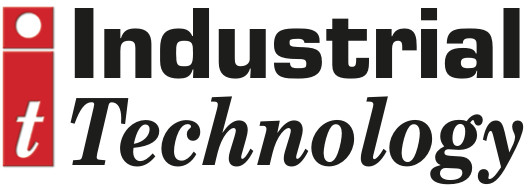
Posted to News on 21st May 2018, 00:00
Connecting systems in the age of the IIoT
The use of communications middleware to automate diverse device-to-device communications is not a new concept; however, today’s software systems are efficient, flexible and ideal for ensuring that industrial equipment communicates reliably. Nick Pridham of Hamersham Automation Software discusses how such programmes can save businesses time, money and resources through streamlining the communications process across a range of industrial uses.

Today’s system designers are busy inventing and implementing Industrial Internet of Things (IIoT) applications and use cases. At some point in the design process, the system designer will consider how the data communication is to work and have some important issues to address. These include how to ensure all the required device platforms can connect to each other, which networking technology is best to use, and how to simplify the scaling of the network so that thousands of devices can automatically join or leave.
Security is also a key consideration; whether a business can withstand the risk of open source software, how secure and protected data streams will be provided, and whether networking responsibility can be moved to another software technology so that the designer can concentrate on their own application.
One solution that provides logical answers to many of these questions is to delegate data networking and data exchange to a middleware solution. The communications middleware concept is designed to separate application tasks from networking tasks. Networking expertise is specialist area and often the most effective business solution is to deploy a proprietary software product. Tried and tested networking software solutions that work according to the middleware concept are widely available.
Flexible and scalable
Data Distribution Service – or DDS – is one of the standard middleware networking software technologies that is widely used. It is a dynamic, publish-subscribe communications software technology that can improve the flexibility and scalability in a wide range of applications including industrial machinery. Despite not being as widely understood as some middleware types such as JMS, its configurability through a powerful QoS (Quality of Service) feature set makes it the ideal solution for use in the IIoT applications.
DDS’s purpose is to simplify the design, programming and managing of software applications by streamlining the way they receive and process data. Suitable for use in a wide range of embedded software systems, it can connect disparate system configurations including chip architectures such as ARM, X86 and PPC and in operating systems like Windows, Linux and QNX. This means a very wide range of embedded devices can be configured to support DDS. When such a wide range of different devices configurations is supported, it enables system designers to have a truly integrated approach to their digital data communication strategy across all of their device types.
Systems for the IIoT
In the current IIoT business space, there is a wide range of embedded systems configurations in use. IIoT devices using DDS can now connect to any other device type, meaning a typical example of systems communications capability could be considered:
- IIoT sensors can talk to other IIoT sensors
- IIoT sensors can talk to diagnostic tools
- IIoT sensors can talk to datalogging devices
- IIoT sensors can provide data streams to remote servers for device monitoring
The size of the different software systems, the number of devices connected and the distance over which they need to communicate all affect the complexity of the challenge and the resulting cost, timeframe and risk involved. Communications middleware such as DDS allows these different devices to exchange information in real time, regardless of their programming language.
The DDS API supports a wide spectrum of language bindings including C, C++, C#, and Java, ensuring DDS has the flexibility to be integrated into any embedded system regardless of whether it is operating at the edge or in the cloud. And DDS provides additional benefits, including improving system security and reliability and longevity. An established technology, DDS is an open standard managed by the Object Management Group. DDS handles the transfer of information between publishers – producers and senders of messages – and subscribers, or those who consume and read messages, regardless of whether they are using different operating platforms or systems.
A system participant with information to offer publishes information on request via a data writer. A system participant requiring information subscribes to information via a data reader. A data writer and data reader exchange information on a topic. The discovery of publishers and subscriber is automatic meaning IP addresses and port number configuration is not required. The publish subscribe methodology for data exchange means DDS is truly peer-to-peer. Neither a message broker nor a cloud server is needed for information to be exchanged, vastly reducing service costs.
The scale that such exchanges can take part on is substantial – tens of thousands of devices can be connected at the same time without affecting the speed at which messages are sent received. DDS automatically knows how to send and receive messages between users, concluding which should receive messages, where they are located and how to proceed if the receiver is unavailable. This simplifies data distribution, reducing the code required to deliver messages, which in turn makes data delivery faster and more efficient.
Secure and flexible
While today’s IIoT systems can enjoy tremendous benefits from connected components, additional network connections can increase security risks. Leading DDS implementations such as CoreDX DDS, delivered by Hamersham and produced by partner company Twin Oaks Computing, provide an end-to-end, state-of-the-art security solution that meets the requirements of all IIOT systems. The major components of the security system are:
- Authorisation: Identification check for a system participant
- Permissions: When authorised, the partcipant activity is controlled in terms of what is allowed to read and written
- Encryption: The data stream is encrypted with an algorithm controlled by the system designer
In addition, users can be on the same machine/domain or operating across different networks/domains. There is no requirement to configure different IP addresses, while specification instructions keep data copies to a minimum, therefore this streamlined transfer process is high performance and operates in real time, reducing the deployment timeline.
CoreDX DDS in particular provides further benefits, such as a small code footprint; just 500KB including standard and additional QoS policies. It also has the ability to run on machines with less than 250KB of memory. CoreDx DDS has been designed to run with minimal resources meaning whether devices located at the edge or the cloud, both locations use exactly the same DDS implementation. While performance of most DDS implementations is good, particularly when compared with other XML-based middleware technology, CoreDX DDS takes this to the next level. For example, when operating on a 1000Mps network, throughputs over 900 Mbps within a maximum timeframe latency of 60 microseconds can be achieved.
Safety and control
DDS presents an ideal method of control for the pneumatics and hydraulics of high-performance industrial equipment. In an environment where precision is everything, CoreDX DDS is able to help achieve safety function communication, working with subsystem control of safety functions such as shut down or stop control, personnel protection, light guards and foot switches. DDS is packed with features that help to remove non-determinism and asynchronisity from data communications.
For control and programming, the technology can help achieve a range of actions, including automatic sequences, pneumatic actuator control, smart diagnostics and data logging. It can also work with the communication protocol CANopen. Valve control is also possible, along with contamination and filter monitoring, peak pressure measurement, motor starting, temperature limiting and oil leak protection. Remote desktop support, ordering spare parts and even noise attenuation can all be carried out using DDS.
Without suitable middleware, these additional network connections could pose security risks to a business’s infrastructure; however, CoreDX DDS Secure provides an end-to-end security solution that meets all the requirements not only of today’s IIoT systems but also military systems. Identification and authentication, access control and confidentiality are all fully integrated into the system’s protocols.







